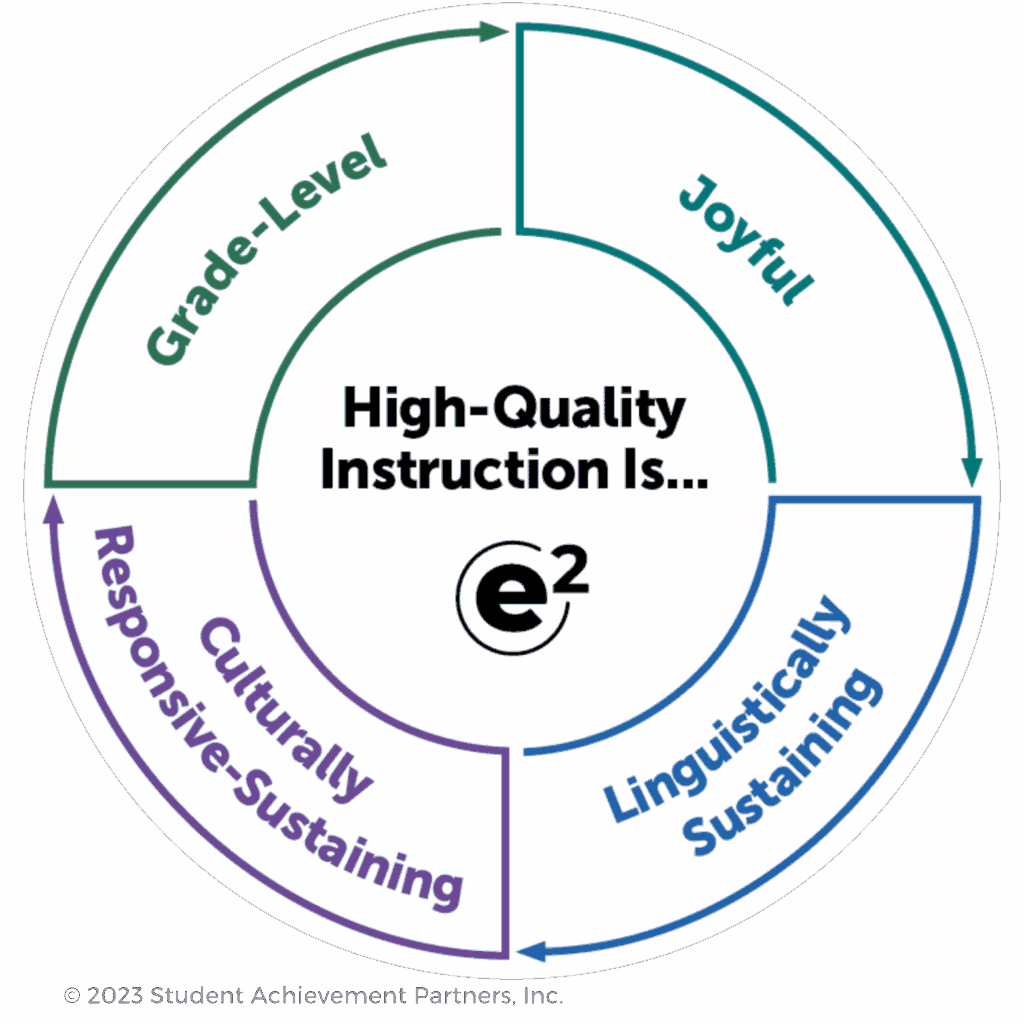Today Student Achievement Partners (SAP), the education nonprofit offering unmatched expertise on standards-aligned math and literacy instruction, released a new instructional practice framework for educators. The Essential x Equitable (e²) Instructional Practice Framework™ is free to download and builds upon the organization’s previous guidance in recognition of the fact that high-quality, standards-aligned instruction must also be asset-based and joyful.
“Three years ago, SAP decided to look beyond ‘just the standards’ to begin to unpack the evidence base around a number of aspects of knowing our students— not just those that show up on formal, end-of-year tests,” said Joy Delizo-Osborne, President of Student Achievement Partners. “What we found is that there is a much more comprehensive way to think about great instruction. It is both standards-aligned and whole-child welcoming. It, simply, is what great teachers have always known great instruction to be.”

SAP’s commitment to ensuring that all students, no matter who they are and where they live, are supported to access and successfully engage with grade-level literacy and mathematics content in the classroom led it to create its first Instructional Practice Guide in 2013. Since then, it has been downloaded hundreds of thousands of times by educators seeking support for how to use evidence-based practices to improve educational experiences and outcomes for all students.
“More than a decade ago, Student Achievement Partners set a vision of what high-quality, grade-level instruction should look like,” said Caroline Damon, Vice President of Academics at Chamberlin Education Foundation. “I’m thrilled to see them apply the latest pedagogical research and their experiences in the field to expand on that vision by recognizing that great teaching is also culturally responsive, linguistically sustaining, and joyful.”
“Our goal with the new e² Instructional Practice Framework™ is to build on our previous guidance to address the reality that our public education system does not yet realize the potential of all students, an issue that is most acutely experienced by Black students and multilingual learners,” added Delizo-Osborne. “We want to help educators design instruction that leverages the assets and honors the brilliance of students who have been historically underserved and marginalized by our education system—a crucial step in supporting all students.”
“Student Achievement Partners (SAP) has been building tools that help make K-12 math programs work better for teachers and students since the Common Core State Standards for Mathematics were published,” said Philip Daro, a lead writer of the Common Core State Standards of Mathematics. “We have learned a lot since then and so has SAP: how teaching can spark student curiosity about math and develop the varied assets students bring to math class into understanding, skill and confidence. Every student belongs in math class and they should know they do. SAP’s new Instructional Practice Framework is a timely tool that pulls the evidence and lessons learned together in a user friendly guide.”
Alongside the e² Instructional Practice Framework™, SAP is launching a suite of instructional tools designed to support every aspect of educators’ instructional plans. Together, these tools equip instructional leaders with the resources needed to build a shared vision of high-quality instruction, understand the current state of teaching and learning in their schools relative to that vision, and take action. Learn more about the suite at: LearnwithSAP.org/e2
The e² Instructional Practice Framework™ was developed in collaboration with a number of partners, including an advisory board of researchers, educator cohort, and school leaders who provided invaluable content expertise and knowledge.
“When we teach, we endeavor to think not just about what we teach, but how we teach,” said José Luis Vilson, an educator, writer, speaker and activist for educational equity and justice, executive director of EduColor, and member of the advisory board. “The framework has done the intentional listening, in hand with the latest research, to help educators and the general public understand how we can create an approach that attends to comprehensiveness, enthusiasm for the work, and students’ individual and collective gifts at the same time. We needed this new approach and this framework gets us there.”




